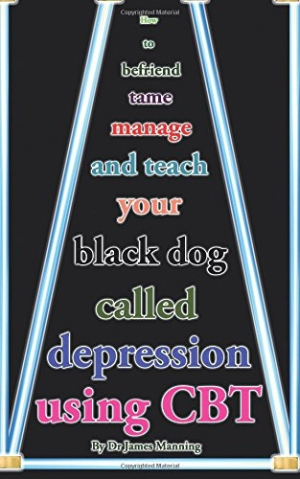How to Befriend, Tame, Manage, and Teach Your Black Dog Called Depression Using CBT
This excellent work on depression should be required reading for therapists and those suffering from the disease.
James Manning’s How to Befriend, Tame, Manage, and Teach Your Black Dog Called Depression Using CBT shows that, like a dog, depression can be managed with insight, patience, and mental training.
The “black dog” comparison was coined by the poet Horace to describe his depression. A creature known for being man’s best friend may be an odd metaphor for a debilitating mental and physical condition, but Manning explains that like a dog, depression will stay with the person afflicted by it loyally. Run from the black dog and it will chase you; feed the black dog and it will grow. Instead, Manning believes people with depression should see the black dog as an opportunity to focus on their mental health. His book outlines how depression can be treated with cognitive behavioral therapy (CBT), or looking at one’s beliefs with a set of cognitive therapy tools.
Manning lays out his course for therapy in a well-organized manner. In less than two hundred pages, the book covers how depression affects the brain, how it skews one’s perception of reality, and how thoughts affect feelings that, in turn, generate behaviors. Each of these topics alone could be a book in itself, but most chapters are no more than a few pages. Manning keeps his points at a high level and explains some, such as how the neurotransmitter serotonin affects the brain, in layperson’s terms.
The book provides a number of quality resources that people with depression can use right away. Many of the chapters end with a checklist, questionnaire, or emotion tracking tool; most of the resources can be completed with only a pencil and time.
But the best part of this book is its writing style. Manning makes depression and its treatment accessible. Depression is painful, and people often don’t recognize or want to admit that they have it. Manning knows this firsthand, not only because he is a clinical psychologist but because he suffered from depression himself.
Manning’s explanations often include his own experiences, which are conveyed with such clear and simple logic that someone with the most entrenched depression may read the work and be able to see their condition differently—and even experience hope. Manning also knows depression is not something to fear, showing this by bookending each chapter with an icon of a friendly-looking black Labrador retriever and a summary written from the dog’s perspective.
Manning’s book should be required reading for therapists and for patients who suffer from depression.
Reviewed by
Katerie Prior
Disclosure: This article is not an endorsement, but a review. The publisher of this book provided free copies of the book and paid a small fee to have their book reviewed by a professional reviewer. Foreword Reviews and Clarion Reviews make no guarantee that the publisher will receive a positive review. Foreword Magazine, Inc. is disclosing this in accordance with the Federal Trade Commission’s 16 CFR, Part 255.

